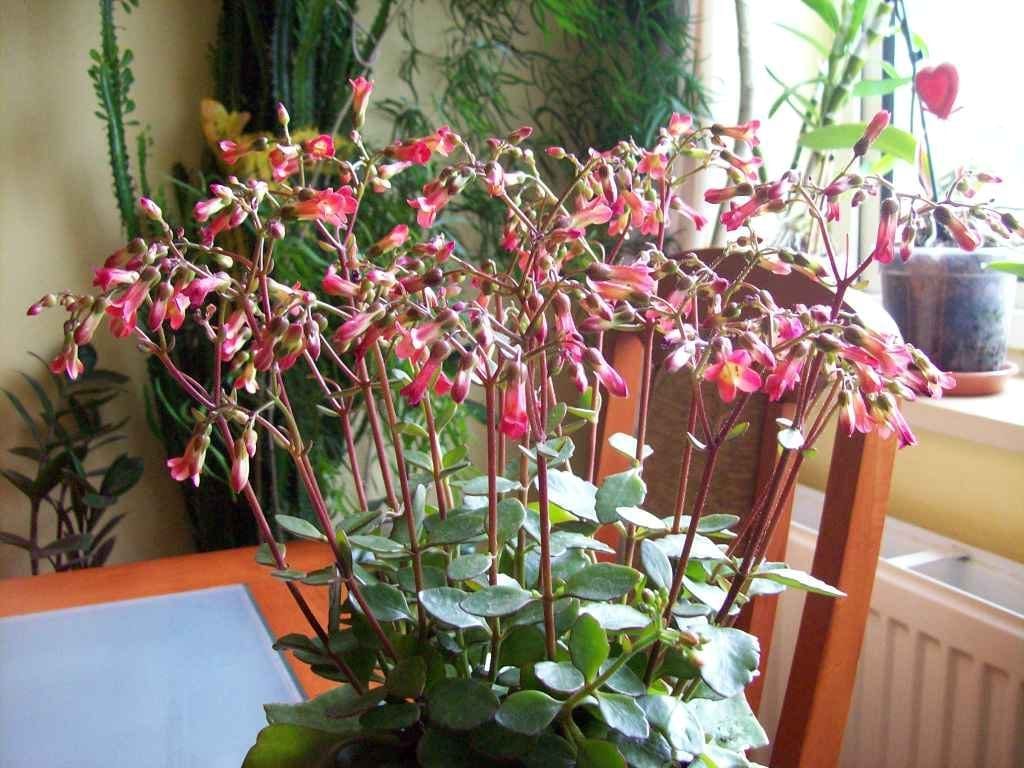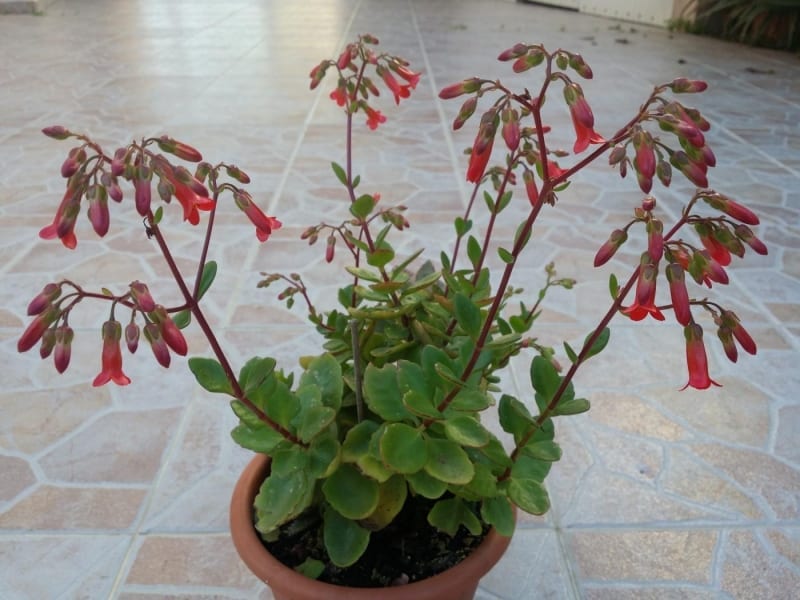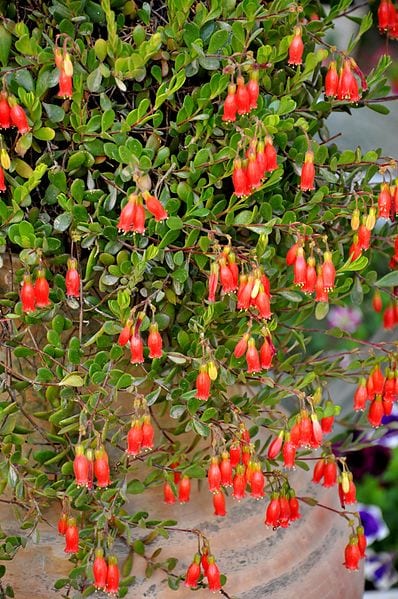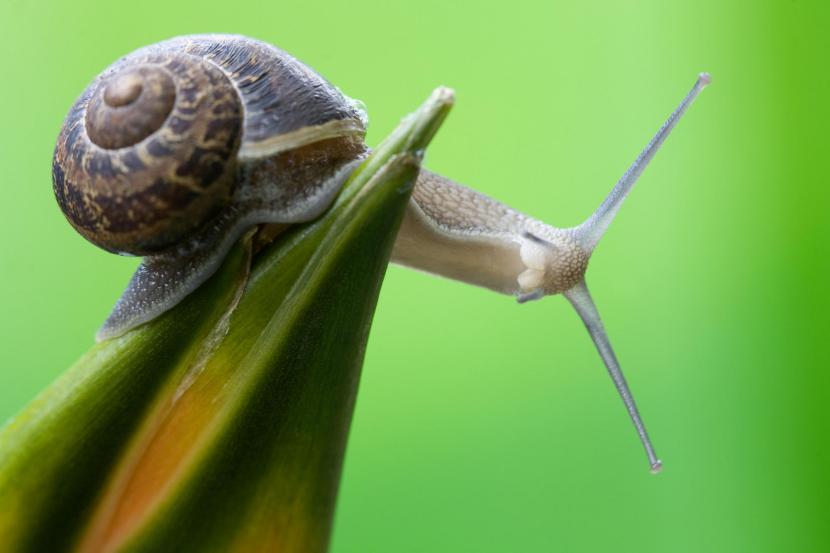
Image - pokojovky.blog.cz
Kalanchoe are succulents that, having no thorns but very beautiful flowers, are one of the favorites to decorate both the patio or terrace and the interior of the houses. But if we had to stay with a variety that is also not particularly known, we would undoubtedly opt for the Kalanchoe 'Tessa'.
Why this one and not another? Well, for the simple reason that, unlike the vast majority of its kind, it serves as a hanging plant for us, which is great estupe. Here is your file so that you know well what are its characteristics and the care it requires.
Origin and characteristics

Image - crassulaceae.ch
Our protagonist is a non-cactus succulent or crass plant whose scientific name is Kalanchoe 'Tessa'. It is a cultivar that won the Royal Horticultural Society's Award of Garden Merit. It has a hanging shape and grows to a height of 30 centimeters. The leaves are fleshy, with serrated edges, and greenish in color. The flowers sprout from a very thin stem less than 0,5cm thick, and are pink in color.
Its growth rate is quite fast, which is why you will not have to wait long to have an adult specimen 🙂.
What are their cares?
If you want to have a copy, we recommend that you provide it with the following care:
Location
This is a Kalanchoe type which it can be had both inside and outside the home. In the first case, it must be in a sunny area; and if it is indoors in a bright room it will grow wonderfully.
Earth
- Flower pot: It is recommended to mix black peat with perlite in equal parts, as it does not tolerate waterlogging. You can get the first one here, and the second by here.
- Garden: plant in soils that absorb water quickly. If yours is not like that, make a hole of about 50 x 50cm, introduce a shading mesh, fill it with the substrate mentioned before and then plant your specimen.
Irrigation

The Kalanchoe It is a plant that, to be successful, you have to water only when you really need it. But of course, for that apart from using a substrate or mixture of substrates that have excellent drainage, it is advisable to check the humidity of them before adding water. For this you do any of these things:
- Weigh the pot as soon as you water it and again after a few days: since dry soil weighs less than wet soil, it will be easy for you to know when to water.
- Use a digital moisture meter: when you enter it, it will tell you instantly how wet the soil that has come into contact with it is, but be careful, to be really useful you must insert it closer to the plant or further away since This way you will know if it is convenient to give it water or if on the contrary it is better to wait a little longer.
- Dig about 5 cm next to the plant: at that depth you will see if the earth is darker and cooler, in which case it will be necessary not to water it yet.
If you have any doubts, you should know that you have to water it about twice a week in summer and every 10-15 days the rest of the year.
Subscriber
From early spring to late summer It is advisable to pay it with fertilizers for cacti and other succulents, following the indications specified on the product packaging. It can also be paid with Nitrofoska Azul, adding one or two small tablespoons every 15 days.
If you live in an area where frosts do not occur or they are very weak and punctual, you can continue to fertilize it until autumn.
Multiplication
El Kalanchoe 'Tessa' multiplies by leaf cuttings in spring or summer. The way to proceed is as follows:
- First, cut a healthy leaf and let the wound dry for about three days in a dry area protected from direct light.
- Then, fill a pot about 10,5cm in diameter with vermiculite (you can get it here) and water it conscientiously.
- Then, place the leaf a little flat, covering a little if you want the end where the roots will come out, which is the same area where it was attached to the mother plant.
- Finally, sprinkle with copper or sulfur to prevent the appearance of fungi, and place the pot outside, in semi-shade.
If everything goes well (which will go 🙂) you will see that new leaves begin to appear in one or two weeks at the most.
Plagues and diseases

It is very resistant, but yes that special care must be taken with excess watering and with mollusks (snails, especially; slugs not so much). To avoid losing the Kalanchoe 'Tessa' You must control the risks and, in the rainy season, protect it with these anti-snail remedies that we tell you here.
Planting or transplanting time
Can be planted in the garden in spring, when the minimum temperature is 15ºC or higher. If you have it in a pot, transplant every two years.
Rusticity
It resists weak and specific frosts of up to -2ºC, but it must be protected from hail. In any case, if it does not drop below 0 degrees it will grow better.
What did you think of the Kalanchoe 'Tessa'? Do you have any?